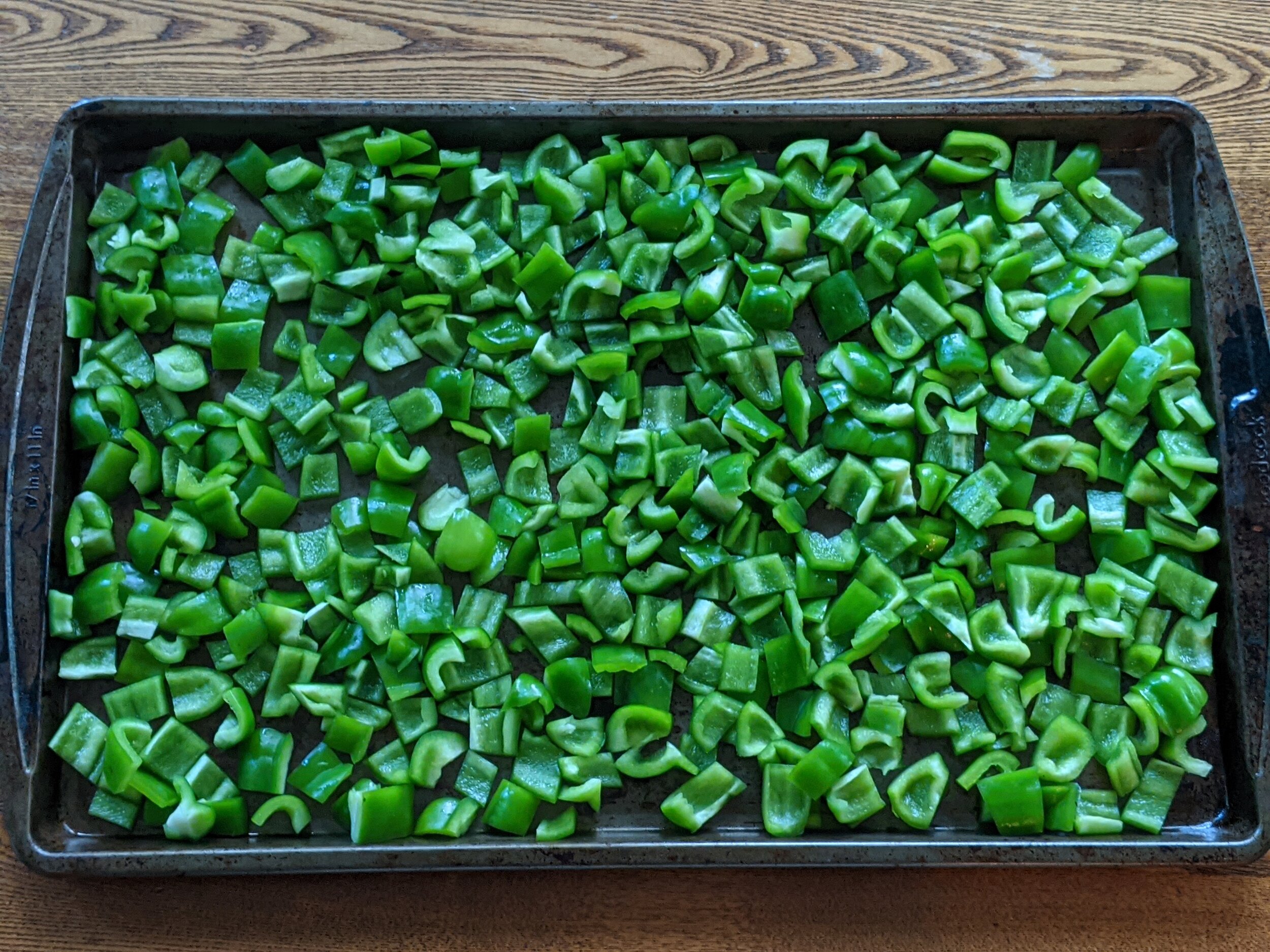Do you have more peppers than you can handle? Do you, like me, feel terrible when food goes to waste? Bumper crops are a blessing…until they leave you overwhelmed, frantically scrolling through recipes, searching for ways to use them. If these truths are hitting home for you, it’s time to make use of your freezer, my friend.
Super Simple Process
The great thing about bell peppers is that you can freeze them with very little preparation. Just grab a knife, cutting board, and baking sheet, and get started!
Step 1: Rinse and dry your peppers.
Step 2: Chop up your peppers however your little heart desires.
Step 3: Spread the chopped peppers out on a baking sheet.
Step 4: Throw the baking sheet into your freezer for about an hour.
Step 5: Store the frozen chopped peppers in a freezer bag in your freezer until you need them.
Using Frozen Peppers
I cook with frozen peppers pretty much exactly the way I would raw peppers, except that I allow for slightly more cooking time. Because the peppers bits are frozen individually on the tray before they’re put into the bag, they’re easy to scoop out of the freezer bag when you need them. Your peppers should last in the freezer for a year.
Perks of Freezing Your Peppers
Freezing your peppers with this method is doing a favor for future you. You’ll be making a recipe in November that calls for peppers, and you’ll say to yourself, “I need a quarter cup of bell peppers, self!” Next thing you know, you’ll be reaching into your freezer and voila! The prep work of chopping your peppers has already been done! You’ll thank your past self and move on with your life.


























